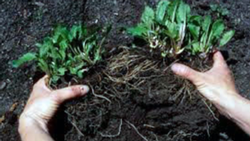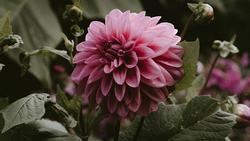Plant Division: Refresh Perennials & Get More Plants

Benefits of plant division:
• Encourages robust blooming in overcrowded perennials
• Reduces plant size and stimulates fresh new growth
• Excellent (free) way to create additional plants for your garden or to share with friends and neighbors
Signs that a plant may need dividing
• A doughnut-type hole in the center of a plant forms as older portions die
• Lots of foliage but not many flowers
• Stunted growth
• Yellowish leaves
How to divide perennials:
1. Water the day before if the soil is dry. Better to divide plants on an overcast day than on a hot day. Ideally, divide plants when there's rain in the forecast to provide moisture for new transplants.
2. Select and prepare the plant to be divided by giving it a moderate pruning.
3. Use a trowel or shovel to dig around the plant to be divided, leaving as large a soil ball as possible.
4. Gently lift the clump gently from the ground.
5. Divide the main clump into several smaller clumps along the obvious separation points.
• Gently tease the roots apart and separate the clump into smaller sections.
• If the clump is seriously overgrown and the roots are badly tangled, pry the roots apart using two spading forks.
• Insert one fork into the center of the clump, then insert a second fork back to back with the first.
• Push the two handles toward each other, and the roots should separate.
• Be sure to use clean, sharp tools.
• Sanitize your equipment with a solution of one part bleach to nine parts water to prevent the spread of any disease.
6. Discard older, less vigorous portions of the clump and save the newer, healthier divisions for replanting. Healthy roots should have a white, sturdy appearance.
7. Replant newly divided plants directly into the garden. Prepare the area to be replanted by amending the soil with compost or other organic material to ensure that new plants become established quickly. Plants may also be potted up into containers for sharing with others.
8. Water plants thoroughly after planting.
9. Provide protection from too much sun, wind, and extreme temperatures.

Dahlia, Annie Spratt, Unsplash
In Marin County's moderate climate, it's easy to just let Dahlia tubers stay in the ground year-round. However, dividing your dahlias will result in more flowers. Important: when dividing dahlia tubers, be careful to keep at least one "eye" on each fat tuber. Look for the white or pinkish dots on the tuber, which is where the new stem will originate. |
